
Kawasaki
Ki-45 Toryu 'Nick'
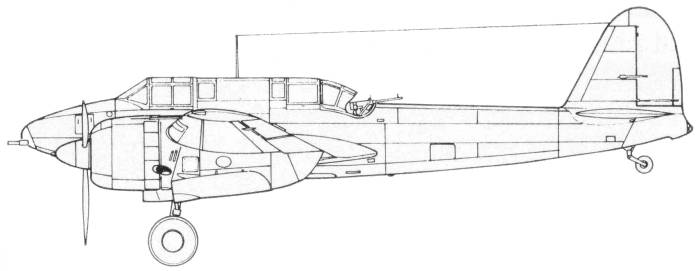
The Kawasaki Ki-45 was designed at a time when the concept of a twin engine fighter was in vogue but the prototype failed to meet the expectations set for it and it was rejected, however, orders were placed for performance improvements on the design. Although the redesign kept the original designation it was for all intents and purposes an entirely new aircraft. The Ki-45-kai was much larger than the original Ki-45 with straight rather than elliptical wings and the fuselage was simplified with an eye towards mass production. The resulting aircraft first flew in September of 1941. Its top speed exceeded IJA specifications and its cruising range and climb were improved over the original design. The design made its official debut after formal IJA adoption as the "Type 2 Two-seater Fighter" in February of 1942. A total of 1690 were produced. Differences in armament configurations resulted in variants designated as "koh", "Otsu", "Hei" and "Tei". Because of its heavy armament and protected fuel tanks the aircraft was popular with its crews and enjoyed a good reputation in the ground attack and anti-shipping roles
The Kit
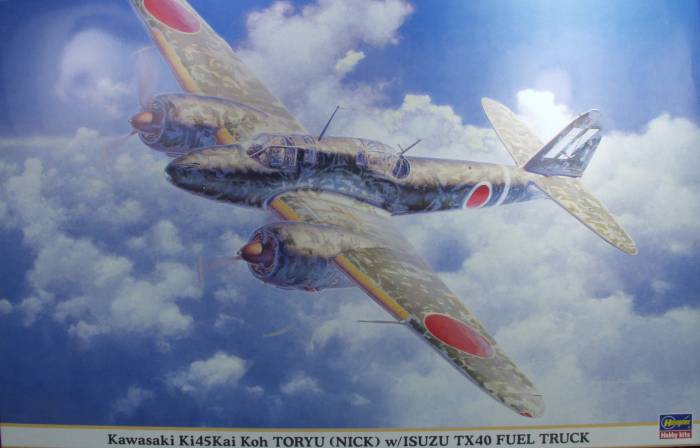
The Hasegawa kit comes in a large top open two part box with nice artwork on the top. The box is much larger than what is required for the aircraft alone as it contains parts for an Isuzu fuel truck as well as the aircraft. It is not my intention to review the truck here so it will be mentioned only in passing. Inside the box are four sealed bags. One for the truck, one for the clear truck parts, one for the aircraft and one for the aircraft clear parts. The aircraft is molded in a gray plastic and features recessed panel line and fastener detail. There are seven sprues, one of which is a duplicate and these include the engine and landing gear parts. The parts are nearly flash free and crisply molded. I found no obvious sink marks or other surface defects on any of the exterior air frame parts.
The control surfaces are all fixed and the fabric areas are represented by what appears to be rib tape lines. The interior is very well detailed with a great many add on parts. The complete pilot / gunner tub is made up as an assembly that includes two wing spars which should provide a correct amount of dihedral as well as provide a sturdy wing mount. The gear bays are boxed in and include molded in structural detail. The two row radial engine is molded in one piece but includes a separate gearbox and oil cooler ring and the engines are recessed far enough in the cowlings that any lack of detail will not be noticed. The only ejector pin marks I found that will show are on the cockpit side wall inserts and removing them will not be easy. They were absent from the usual places like gear struts and inside of gear doors which have nice molded detail. The tires are not weighted but have separate hubs for easy painting. The instrument panel has raised bezel and instrument dials which can either be dry brushed or a nice decal is provided to place over it. By my count there are 130 parts in gray. The kit includes a number of parts that are not used and some of the sprues were obviously cut from larger sprues indicating that other versions will be forth coming. See photos below
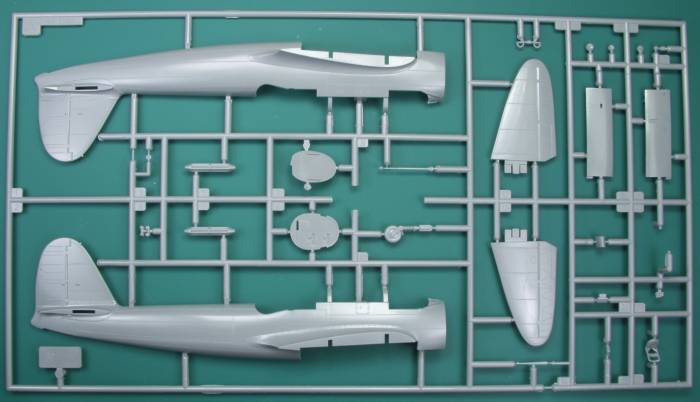
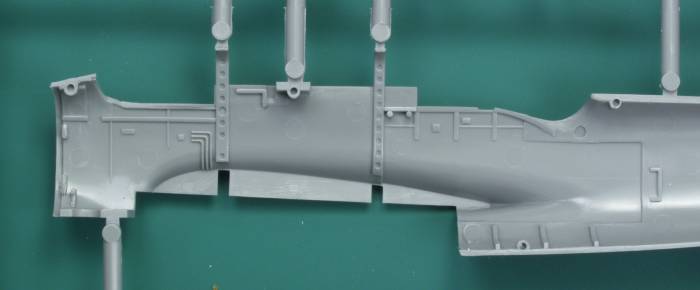
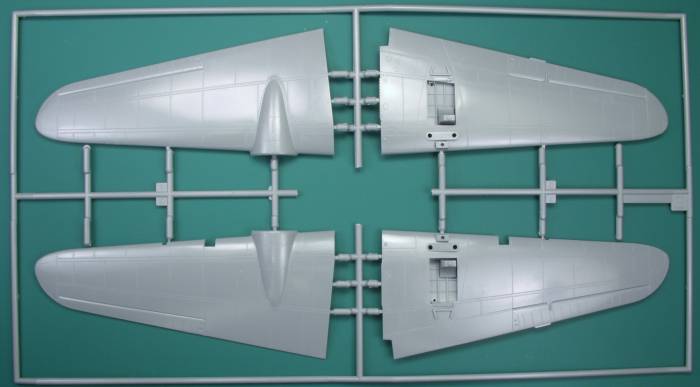
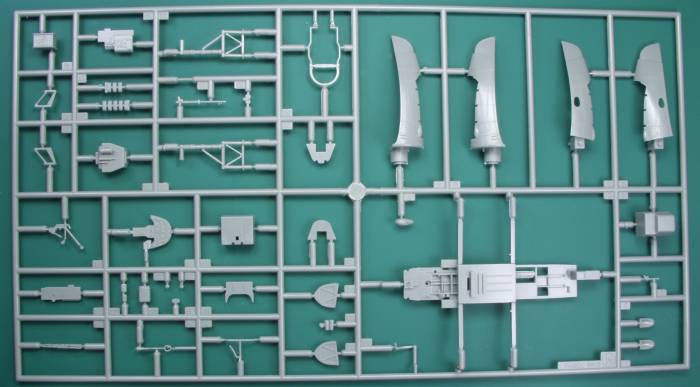
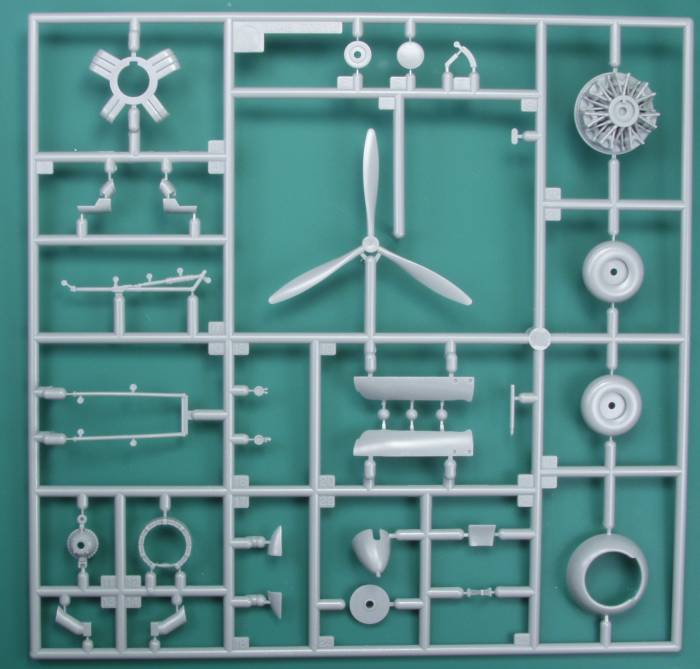
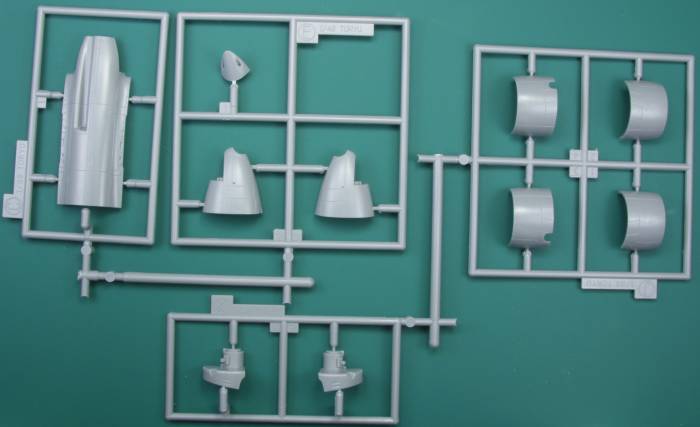
The clear parts are relatively thin and clear with nice defined frame lines. As with many Japanese aircraft a mask set would be most helpful. The canopy is molded so as to provide for open parts that could be opened on the prototype. Altogether there are 18 clear parts including the gun sight, wing tip lights and several other very small parts. See photo below.
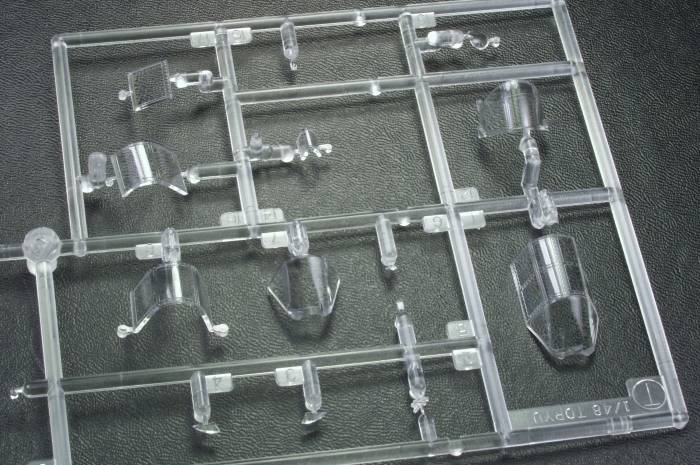
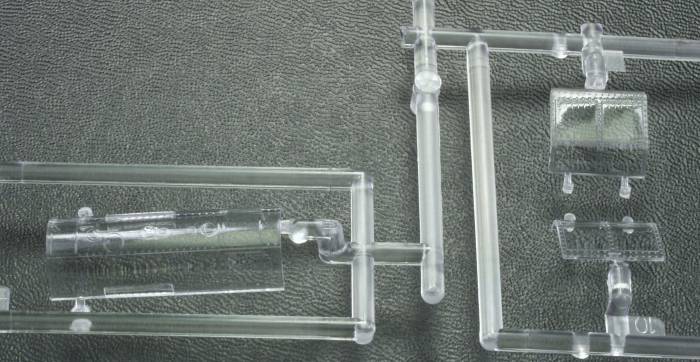
The decal sheet provides decals for two aircraft plus those for the fuel truck. They appear to be opaque and include large white wing and fuselage bands for one version and the yellow leading edge wing markings that would best be painted on. The sheet includes some stenciling and registration really isn't an issue as the multicolor national markings are multi piece. See photo below.
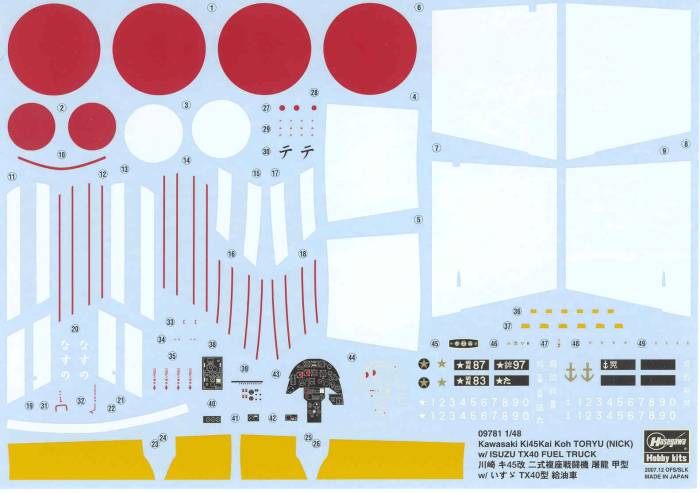
The instructions are printed on a large sheet, 32 1/2" x 11" folded to form ten panels. The first panel has history and specifications in English and Japanese, The second panel has a parts map, icon chart and a paint chart in English and Japanese that references Creos Aqueous Hobby Colors and Mr. Color numbers. The next five panels are assembly drawings. The next two are for painting and markings and the last page has basic decal application instructions and the usual safety warnings. The truck has its own instruction manual on a smaller sized page with eight panels.
After Market Goodies
For this kit I plan to use the Eduard Zoom set [FE415] to enhance the cockpit. This is one of the self adhesive sets which at least in my case the jury is still out. while it seems handy I'm not convinced it will stick forever. The set includes a painted instrument panel and other bits, I like it for the painted panel as I'm usually frustrated when I try to do them myself. See photo below. I will most likely pick up a mask set for the kit as it gets closer to build time.
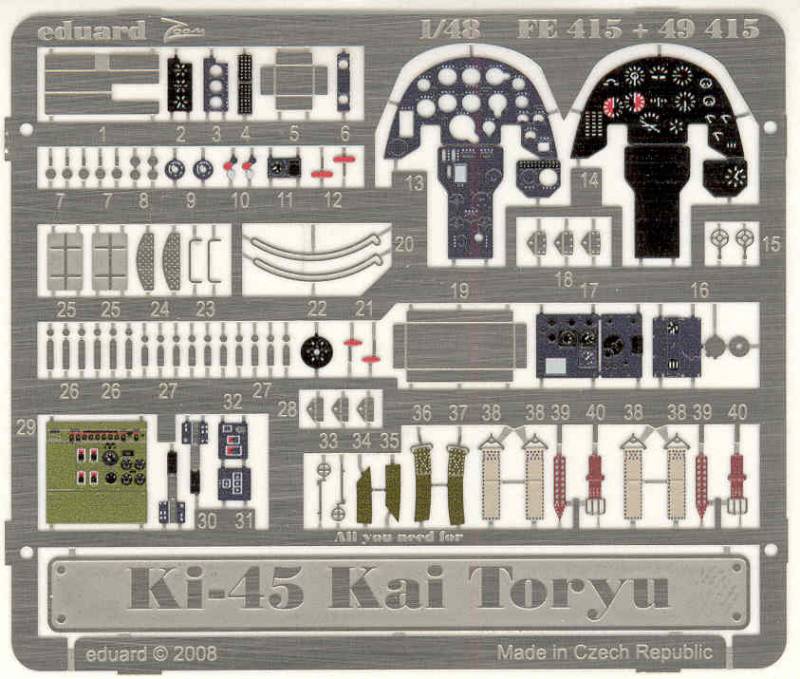
Conclusions
This appears to be a really nice state of the art kit. While I might prefer that the aircraft and truck be sold separately (and at some point they no doubt will be) together they are a good value for the money. The kit has a nice level of interior detail. While Hasegawa kits tend to fit reasonably well but there are some reported fit issues but nothing catastrophic and as a result would recommend the kit to anyone with a modest amount of experience only because of the number of parts in the kit.
Links
to kit build or reviews
A Review / build of
the
aircraft and truck can be found here,
it also has a bit more in depth history of the aircraft and
some nice
in progress and completed photos.
References
Japanese Aircraft of the Pacific War by R.J. Francillon
Back to the MISC JAPANESE page